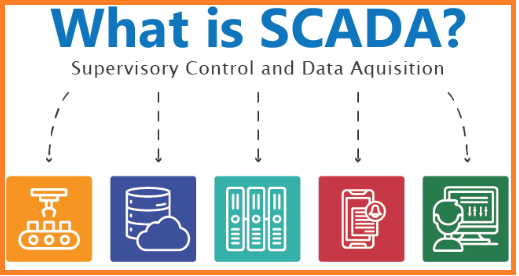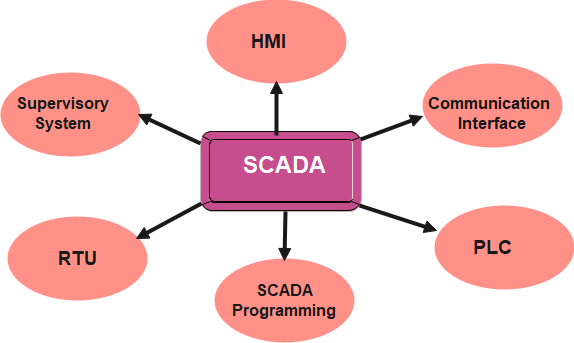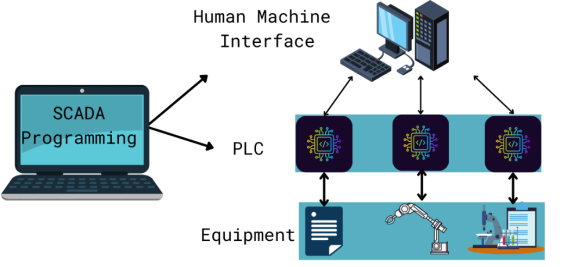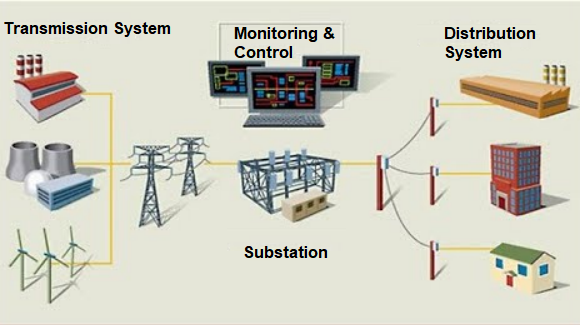SCADA stands for “Supervisory Control and Data Acquisition.” It is a type of industrial control system that is used to monitor and control industrial processes, such as power generation, oil and gas pipelines, and water treatment plants.

Working of SCADA
SCADA systems typically consist of a central host computer or server, remote terminal units (RTUs), programmable logic controllers (PLCs), and human-machine interfaces (HMIs). The RTUs and PLCs are connected to sensors and actuators in the field, which collect data and control the industrial processes. The host computer or server collects and processes data from the RTUs and PLCs, and provides a graphical interface for operators to monitor and control the industrial processes.

SCADA systems are designed to operate in real-time, with data being collected and processed in near real-time, and control signals being sent to the field devices within milliseconds. They are critical for the safe and efficient operation of industrial processes and are used in a wide range of industries, including manufacturing, transportation, energy, and water management.
SCADA Programming
SCADA programming involves designing and developing software programs that control and monitor industrial processes through the SCADA system. This programming involves several steps, which include:
1. Defining the Requirements
This step involves identifying the specific needs of the industrial process, such as the data to be monitored, the control actions to be taken, and the user interface for the operators.
2. Designing the System Architecture
Based on the requirements, the system architecture is designed, which includes the hardware and software components of the SCADA system, such as the RTUs, PLCs, HMIs, and host computer.
3. Developing the Software
The software programs for the SCADA system are developed, which includes the code for monitoring and controlling the industrial processes, as well as the user interface for the operators.
4. Testing and Debugging
The software is tested and debugged to ensure that it meets the requirements and operates correctly.
5. Deploying the System
The SCADA system is deployed and installed in the industrial process, and the operators are trained on how to use it.
6. Maintaining the System
The SCADA system is maintained and updated as necessary to ensure that it continues to operate effectively and efficiently.

SACADA System Example
An example of a SCADA system and its application is in the control and monitoring of a power plant. A power plant generates electricity by converting various forms of energy into electrical energy. To do this, the plant must be able to control and monitor several complex processes, such as fuel supply, combustion, steam generation, and power distribution.

SCADA System Application
There are some of the most common applications of SCADA systems:
1. Oil and Gas Pipelines
SCADA systems are used in oil and gas pipelines to monitor and control the flow of oil and gas, detect leaks, manage pumping and compression stations, and to ensure the safety and efficiency of the pipeline operation.
2. Water treatment and distribution
SCADA systems are used in water treatment and distribution systems to monitor water quality, detect leaks and equipment failures, and to manage the operation of pumps and valves.
3. Manufacturing
SCADA systems are used in manufacturing to monitor and control the production process, manage inventory, and optimize production efficiency.
4. Building automation
SCADA systems are used in building automation systems to monitor and control HVAC, lighting, security, and other systems.
5. Transportation
SCADA systems are used in transportation systems, such as railways and airports, to manage traffic flow, monitor critical systems, and ensure the safety and efficiency of transportation operations.
6. Renewable Energy
SCADA systems are used in renewable energy systems, such as wind and solar power, to monitor and control power generation, manage energy storage, and optimize power output.





